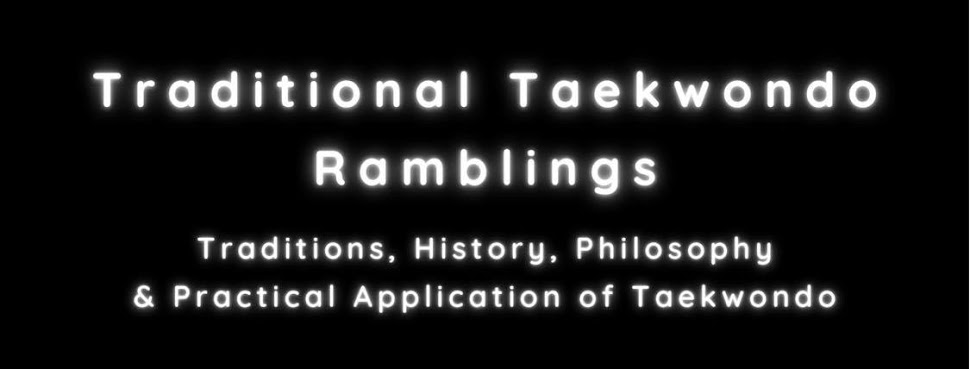We just start straight into part 3 :-)
Template 3; Ap Makki:
What on earth is an "Ap makki"? I just came up with the term myself:-P Here the attacker does a round elbow strike or dollyo palkeup chigi, which the defender then jams by shooting his arm straight ahead, before the elbow gets to terminal velocity (You'd be hardpressed to "block" a round elbow strike if you let it pick up much momentum). Again the other hand come up from underneath and parries it to the side, before the other hand pushes it inwards and you do your own elbow strike. So the uniqueness in this template is the elbow strike, and frontal contact point. If you click the read more you will see the youtube embedded clip:-)
Why these three starting templates?
What makes these three templates a good starting point is not the attacks in and off themselves. They can in fact be substituted with any other number of attacks and it would still work. I personally use the haymaker first, the straight punch second and the elbow strike third to work from most common to most uncommon attacks listed from the HAOV (Habitual Acts Of Violence theory of Patrick McCarthy). The haymaker without a doubt the most common non dojang attack, with or without a push or lapel grab. The British Crime survey confirms this time and time again, yet most Taekwondoin never train to thwart this attack. To start out with this attack we ensure that at the very least we train to deal with it (the first, or the first and second count before counterattacking) and that we get to train it a lot. The straight punch follows the same trajectory of attempted grab or push as well, so it deals with a lot of common HAOV. Then you have the round elbow strike, not a common attack "on the street", but it ensures that the Taekwondoin works at the most realistic range possible since the elbow is a close close close range technique.
The real reason I chose these three as basic templates if you look past the attacks however is the first contact point. Training these three you get to work with an outer contact point, an inner contact point and a frontal or jamming contact point. This cover the basics you need:-)
Building on the foundations:
1: Vary the attack (scripted)
With the three templates trained, you can start to build on the foundations that you have made. The first one I start out with is to vary the attack the respective partners are doing. For instance if one does attack A, the other does attack B, and they both have to work within the template. This can be confusing at first but it is pretty fun.
2: Vary the attack (unscripted)
In this variation unlike the one we just covered the attacker can do any of the three attacks when it is "his" turn. So you could start out with a haymaker as in the very first flowdrill clip. When the partner has stopped, parried and controlled your haymaker he throws whatever he feels like (straight punch, elbow or haymaker), which you then deal with, and when you have dealt with it you throw whatever you feel like. It is wise to start out slow here until you have mastered it. In the clip we do the attack slow to give the other one a chance to react.
3: Insert a striking finish
Here you deal with the attack, but you insert a striking finish, after the pass but before the control. Haymaker, blocked, passed, inserted strike, control with the inserted striking hand before resetting the drill. Bonus if you can relate the striking finish to a Poomsae, because then you are truly starting to get the ide of the common theme from basics, poomsae, self defense and sparring.
4: Insert a grappling finish
Here you do a random locking finish. As before you can do this from werever you feel like it from any contact point. This lets you train to "pick your moments" to apply the different locks. Again try to link it all back to Poomsae.
5: Insert a grappling and striking finish
Now you can strike to lock and lock to strike. Play around. Pick your moments and then apply the finishing touches as you feel like it.


No comments:
Post a Comment